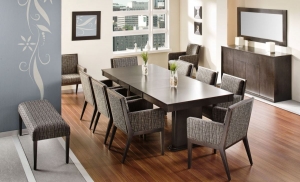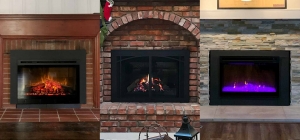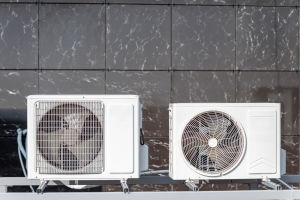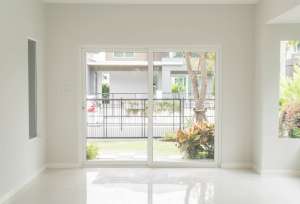The Appeal of Wood Bathroom Floors
Wood bathroom floors add warmth, elegance, and a timeless appeal to any home. Unlike tile or stone, wood brings a natural aesthetic that enhances the cozy and inviting atmosphere of a bathroom. However, moisture and wood don't always mix well, which raises concerns about durability and maintenance. With the right wood type, protective finishes, and proper care, wood flooring can be a viable and stylish option for your bathroom.
Pros and Cons of Wood Bathroom Floors
Advantages of Wood Floors in Bathrooms
One of the biggest reasons homeowners choose wood flooring in bathrooms is the unmatched beauty and character it provides. Unlike cold tile, wood feels warmer underfoot, making it more comfortable, especially in colder months. Additionally, wood flooring creates a seamless transition from the rest of the house, offering a cohesive look that enhances home design.
With proper sealing, high-quality hardwoods can withstand moderate moisture levels without warping. Engineered wood, in particular, is an excellent alternative because of its enhanced resistance to humidity. Modern sealants and finishes also help protect the wood from water damage, ensuring long-term durability when properly maintained.
Drawbacks and Challenges
The main concern with wood bathroom floors is their vulnerability to moisture. If water seeps into the wood, it can cause warping, swelling, or mold growth. This means that spills and splashes must be wiped up immediately to prevent long-term damage. Additionally, wood floors require regular sealing and maintenance to maintain their water-resistant properties.
Another consideration is cost. Compared to tile, wood flooring—especially high-quality or engineered options—can be more expensive upfront. Installation may also require additional sealing treatments, increasing overall expenses. However, for those who prioritize aesthetics and warmth, the investment may be worthwhile.
Best Wood Options for Bathroom Flooring
Engineered Wood Flooring
Engineered wood is one of the most recommended options for bathrooms. Unlike solid wood, it consists of a plywood base topped with a hardwood veneer, which makes it more resistant to moisture fluctuations. The stability of engineered wood reduces the risk of warping, making it a safer choice for humid environments. High-quality engineered wood with a durable finish can last for years with proper maintenance.
Teak Wood
Teak is naturally resistant to water due to its high oil content, making it an excellent choice for bathroom floors. This tropical hardwood has been used in boat building for centuries because of its durability in wet conditions. While more expensive than other wood options, teak's longevity and resistance to moisture make it a smart investment for bathroom flooring.
White Oak
White oak is another great option for wood bathroom floors. It has a tighter grain structure than red oak, making it more resistant to water penetration. With a high-quality finish, white oak can withstand moderate bathroom humidity while maintaining its beautiful natural look.
Bamboo Flooring
Though not technically wood, bamboo is often categorized alongside hardwoods due to its similar appearance and strength. Strand-woven bamboo is particularly durable and moisture-resistant, making it a solid alternative to traditional wood flooring. Plus, it's an eco-friendly choice for homeowners looking for sustainable materials.
Protecting and Maintaining Wood Bathroom Floors
Proper Sealing and Finishes
To enhance the longevity of wood bathroom floors, applying high-quality water-resistant finishes is essential. Polyurethane sealants, oil-based finishes, and marine-grade varnishes provide a protective layer that prevents moisture penetration. Regular resealing every few years helps maintain this protection.
Managing Humidity and Moisture
Installing proper ventilation, such as exhaust fans, helps regulate humidity levels and prevent excessive moisture buildup. Using bath mats and rugs near the bathtub and sink can also help absorb excess water, reducing direct exposure to the wood.
Cleaning and Maintenance
Wood bathroom floors should be cleaned with a damp—not soaking wet—mop and a pH-balanced cleaner designed for wood. Harsh chemicals or excessive water can strip away protective finishes, making the wood more susceptible to damage. Routine cleaning and prompt spill cleanups will keep the floor looking pristine for years.
Is Wood Flooring Right for Your Bathroom?
Wood bathroom floors can be a stunning and practical option when the right precautions are taken. While they require more maintenance than traditional tile or vinyl, the warmth and elegance they bring to a space can make the extra effort worthwhile. Engineered wood, teak, and properly sealed hardwoods can all offer a long-lasting, moisture-resistant flooring solution.
If you love the look of wood but worry about maintenance, consider wood-look alternatives like luxury vinyl plank (LVP) or porcelain wood-look tiles. These materials mimic the beauty of real wood while offering superior water resistance. Ultimately, with careful selection and proper upkeep, wood bathroom floors can transform your space into a sophisticated and inviting retreat.





